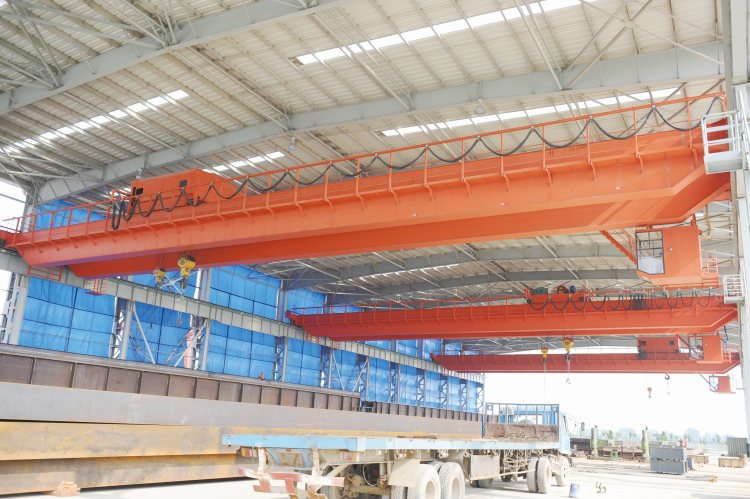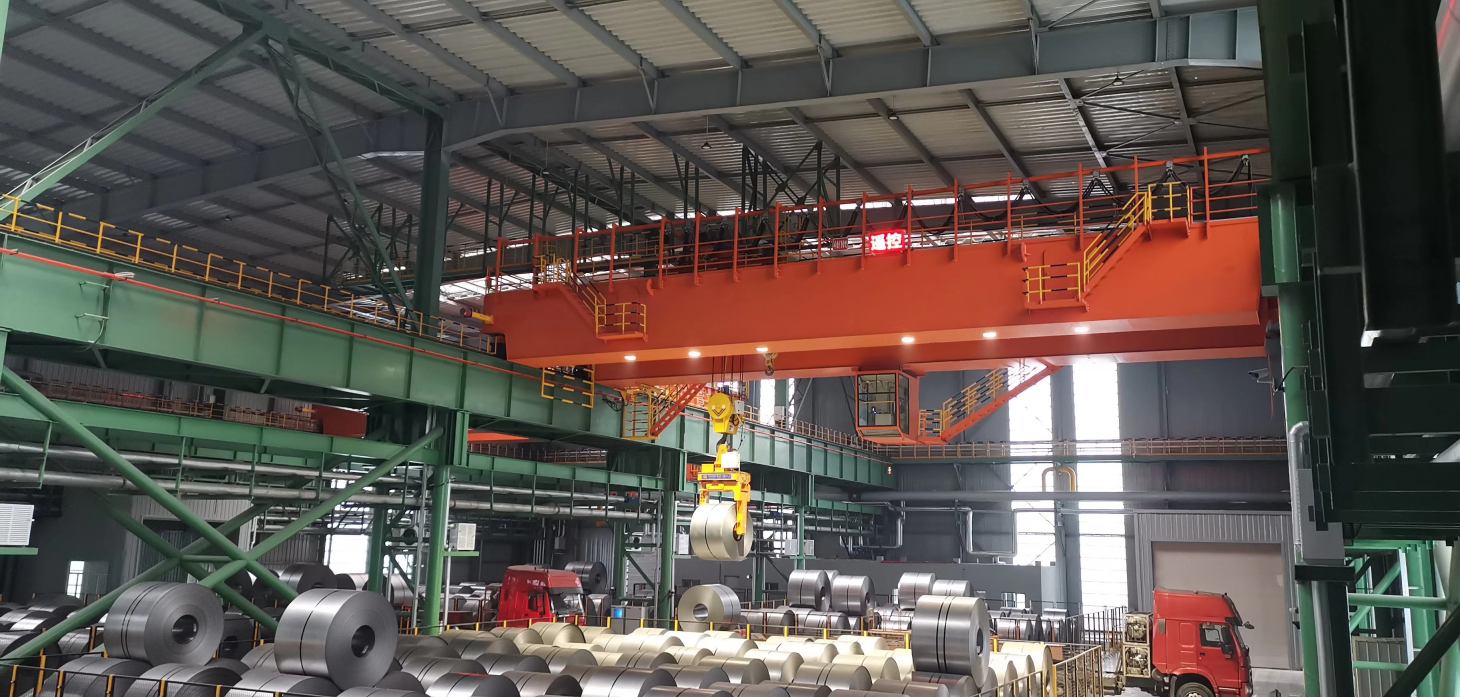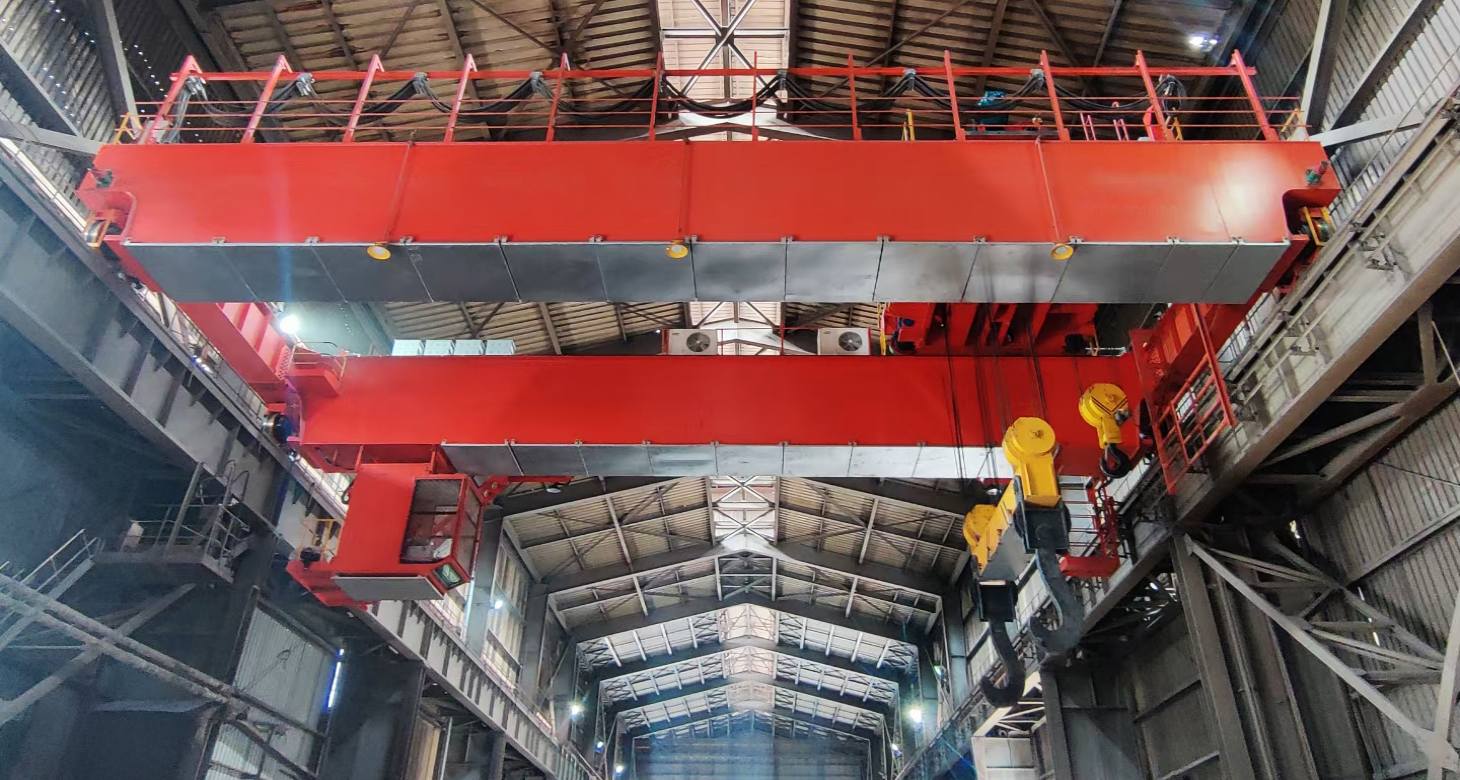In heavy industry, construction, and manufacturing, efficient material handling is crucial for productivity, safety, and cost-efficiency. As operations expand, the need for heavier lifting capabilities often arises. If your business is considering upgrading to a 50 ton overhead crane, it’s essential to weigh the benefits, costs, and long-term impact of such an investment. This article explores the key considerations to help you decide whether a 50 ton overhead crane is worth the investment.

1. Understanding the Capacity and Benefits of a 50 Ton Overhead Crane
A 50 ton overhead crane can handle loads up to 100,000 pounds, making it ideal for industries that deal with heavy equipment, machinery, or large-scale manufacturing. This crane type is commonly used in sectors such as:
- Steel and Metal Fabrication: For handling heavy steel coils, sheets, and assemblies.
- Automotive Manufacturing: For lifting vehicle frames, engines, and production equipment.
- Construction and Infrastructure Projects: For moving prefabricated concrete elements or structural components.
- Shipbuilding: For maneuvering large ship parts and assemblies.
Benefits of Upgrading to a 50 Ton Overhead Crane:
- Increased Capacity: Supports larger loads without needing multiple lifts, reducing operation time.
- Enhanced Efficiency: Streamlines processes by allowing a single crane to handle heavier loads.
- Safety Improvements: Reduces risks associated with multiple lifts or using small overhead cranes beyond their capacity.
- Future-Proofing: Accommodates growth in your operations as lifting requirements increase.
2. Cost of Upgrading to a 50 Ton Overhead Crane
Investing in a 50 ton overhead crane involves significant costs, which vary depending on several factors. Typical costs include:
- Crane System: The cost of a 50 ton crane system can range from $100,000 to $300,000, depending on the specifications, features, and brand.
- Installation: Installation costs can range between $20,000 and $50,000, depending on the complexity of the facility and any required modifications.
- Structural Upgrades: Existing buildings may require reinforcement to support the additional weight, which can add tens of thousands of dollars.
- Maintenance and Training: Ongoing costs include regular inspections, maintenance, and operator training, essential for ensuring safety and efficiency.
While the upfront costs are substantial, consider the long-term benefits of increased productivity, reduced downtime, and improved safety.

3. Factors to Consider Before Upgrading
Before committing to a 50 ton overhead crane, evaluate the following factors to ensure it aligns with your business needs:
Current and Future Lifting Needs
- Assess Your Current Operations: Are you frequently lifting loads near or beyond your current crane’s capacity?
- Plan for Growth: Will your business expand its operations, requiring heavier lifts in the future?
Facility Infrastructure
- Structural Assessment: Ensure your building’s support structures can handle the added weight and stress of a 50 ton crane.
- Space Availability: Confirm that the crane can be installed without disrupting existing operations or requiring excessive modifications.
Operational Efficiency
- Productivity Gains: Will a 50 ton crane significantly improve workflow efficiency?
- Safety Enhancements: Will the crane reduce risks associated with overloading or using multiple smaller lifts?
4. Return on Investment (ROI)
When evaluating whether a 50 ton overhead crane is worth the investment, consider the potential ROI. Key factors that contribute to ROI include:
- Increased Throughput: A higher-capacity heavy duty overhead crane allows for faster handling of large loads, reducing overall processing time.
- Reduced Downtime: Minimizing the need for multiple lifts or load transfers reduces downtime and operational delays.
- Lower Maintenance Costs: Using a crane within its rated capacity reduces wear and tear, lowering maintenance costs and extending the crane’s lifespan.
- Improved Safety: Enhancing safety reduces the risk of accidents, injuries, and costly liability claims.
For many businesses, the improved efficiency, safety, and capacity provided by a 50 ton crane can lead to substantial long-term savings and productivity gains.

5. Potential Challenges of Upgrading
While upgrading to a 50 ton overhead crane offers numerous advantages, it also comes with challenges:
- Facility Upgrades: Structural reinforcements may be costly and time-consuming.
- Operator Training: Staff may require additional training to handle the new crane safely and efficiently.
- Initial Disruption: Installing a new overhead eot crane may temporarily disrupt operations, requiring careful planning.
- Regulatory Compliance: Ensure the upgrade complies with all safety standards and regulations (e.g., OSHA, ANSI).
6. Alternatives to a 50 Ton Crane
If a full upgrade to a 50 ton crane isn’t feasible, consider these alternatives:
- Using Multiple Cranes: Coordinate two smaller cranes to lift heavy loads (though this can increase risks).
- Renting a Crane: For short-term needs, renting a 50 ton crane may be more cost-effective.
- Mobile Cranes: For flexibility, mobile cranes can handle heavy loads without permanent infrastructure changes.
Conclusion: Is It Worth the Investment?
Upgrading to a 50 ton overhead crane can be a game-changing investment for businesses dealing with heavy loads. While the costs are significant, the benefits of improved efficiency, safety, and capacity often justify the expense. Carefully assess your current and future needs, infrastructure readiness, and potential ROI to make an informed decision. If your operations demand increased lifting capacity and you plan for long-term growth, a 50 ton overhead crane is likely a worthwhile investment that will enhance productivity and safety for years to come.
